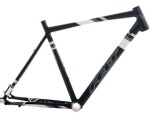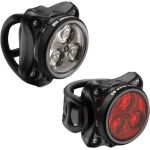-
If you are citizen of an European Union member nation, you may not use this service unless you are at least 16 years old.
-
You already know Dokkio is an AI-powered assistant to organize & manage your digital files & messages. Very soon, Dokkio will support Outlook as well as One Drive. Check it out today!
| |
Which Bike
Page history
last edited
by Guy Lancaster 1 year, 5 months ago
Bike Types

- Most properly-fitting well-maintained bikes are good for commuting and weekend rides.
- A Hybrid bike (general purpose on or off road bike with gears) is a the best choice for weekend rides and commuting too. These can be bought for under £300 new. Second-hand/freecycle bikes may be cheaper, but if they have not been well-maintained, they will be less reliable and can easily rack up almost a new bike’s worth of repair bills to get them up to scratch and keep them on the road.
- Mountain (All-Terrain) bikes are fine, but may be a bit less efficient than road bikes on all-road routes. Suspension can work on the front wheel, back wheel, both wheels or neither. Some low-end full-suspension bikes can be hard work if the suspension can not be adjusted, and you can end up putting as much work into bouncing up and down as you do going forwards on roads.
- Light-weight racing bikes with narrow wheels and stiff frames are fine on roads, but may be a little harder to handle on off-road/gravel/bridle-path rides.
- Fixed-gear (Fixie) or single-speed bikes will be harder work on hills. Single-speed track-spec bikes must be fitted with both front and rear brakes when used on public roads.
- Well-maintained quality folding bikes, e.g. Moultons, Tern, Bromptons, are fine, but basic folders, e.g. Raleigh shoppers, not so good. Click here for some reviews.
- Tandems – fine, but riders should have practice riding on a Tandem together – click here for tips.
- E-bikes – fine, but bear in mind the safety of other riders, most of whom wont be accelerating quite like you or doing 15mph up steep hills. On longer rides with a standard battery (250Wh), you may have to ride the last bit unassisted, when out of charge, or run the bike on lower assist settings for the whole ride. If you bring a charger then pubs may let you recharge if you ask nicely, but its quite possible they may not (specially if there are more than one e-cyclist asking for this). Click here for UK Government rules.
- Recumbent bikes are more efficient when going flat out downhill or on the flat, when most of your effort is spent pushing air out the way. However they can be hard work hill climbing, that’s why they sometimes have 3 sets of gears (front derailleur, rear derailleur, and hub). A flag+pole is needed to maintain visibility.
- Gravel Bikes – off-road bikes with drop handlebars.
- BMX – no
Bike Frames
 Frame can be made of:
- Aluminium (sometimes called alloy) is what most bikes are made of, light and strong, but needs some sort of suspension, even just a squishy saddle if you want to ride offroad or on cobbles.
- Steel (includes chromoly) has quite a lot of give in it, so needs less suspension and takes quite a bit of punishment. Reynolds make lighter but more expensive frames, including double-butted frames (thinner in the middle) - click here for more information. Surly make super-rugged steel bikes. Starley make steel racing bikes. Steel can be easily repaired, unlike most other frame materials.
- Carbon Fibre – strong/light/expensive, specialists can repair.
- Titanium – strong/light/expensive. (from Litespeed )
- Wood (from Materiabikes)
- Bamboo (from Bike Bamboo, My Boo).
- More information here.
Click here for frame size guide.
Tyres
 - Tough tyres such as Schwalbe Marathon Plus or Continental Gatorskins are good choices for both on- and off- road riding (they are quite puncture-resistant). Tyres should be pumped up well (to the pressure listed on the side of the tyre).
- You can go tubeless! (fewer punctures but harder work when you do get a puncture).
- Solid tyres - the story so far.
Accessories
 When buying a bike, allow for the cost of the following (if you don’t already have them):
- A Helmet - should be properly fitted and adjusted - reviews here.
- Lights (for riding after dark or rides through canal tunnels).
- Back and front Reflectors are required. Wheel-fitted side reflectors are good for inhibiting impacts from cars coming from side roads.
- Mudguards – keeps you dry and mud free.
- Luggage – either a rack+pannier, a saddle-bag, or light-weight ruck-sack. Panniers can be kept attached with mini carabiners as well as the supplied clips. Cycling ruck sacks have space to keep your back less sweaty.
- A good Lock – click here for more theft-stopping suggestions.
- Waterproofs – jacket, leggings and/or cape. Pay more for water-permeable fabrics e.g. Goretex – they should keep you dry but let the sweat out.
- Puncture fix kit – should include a pump, inner tube and/or patches, and tools to remove your wheels. It is a good idea to have fixed at least one puncture on your bike before your first long ride. First detach the wheel with tools or the bike’s quick release levers, remove the tyre with tyre levers, and remove any glass, nails, stone chips etc. from the inside and outside of the tyre. Swap the tube, put the tyre back on, and pump to the pressure given on the side of the tyre. Click here for video.
- Toe clips or cleats? Cleats are not for the beginner. You need compatible shoes and pedals and you need to be able to get your feet down quickly. Cleats fasten the cycling shoe directly to the pedal and make cycling more comfortable as you may increase your pedal power by pulling up on one pedal at the same time as pushing down with the other. Otherwise either get toeclips or use shoes with a good grip on the sole so your feet dosen't slip off the pedals in wet weather.
- Chain lube – click here for guide
- Saddles - There are saddles for women, road racing, and offroad cycling. Beginners may want a gentler well- sprung saddle. Brookes B17 saddles are well thought of, but take some breaking in. Click here for a guide.
- Lycra - not required for general riding!
Some of the above may be included in the advertised new bike purchase price, most will not.
More help

Which Bike
|
|
Tip: To turn text into a link, highlight the text, then click on a page or file from the list above.
|
|
|
|
|
Comments (0)
You don't have permission to comment on this page.